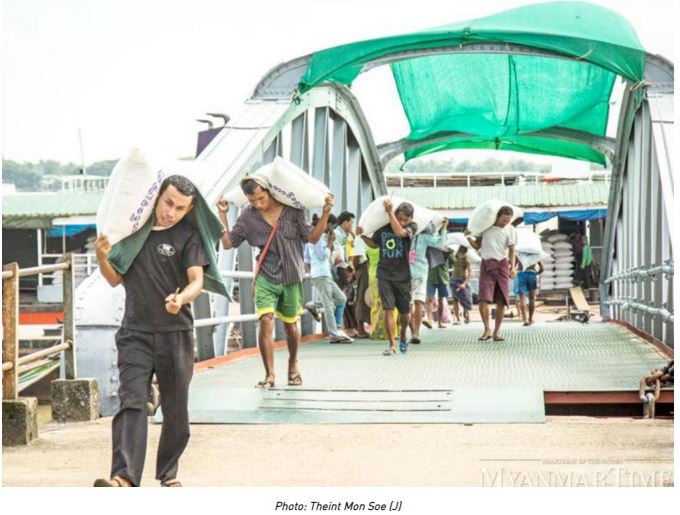Myanmar: Officials see potential for growth in trade, but risks remain
Of the 137 countries that trade with Myanmar, volumes from the 10 largest have spiked in the past decade and could continue growing as the local economy develops and expands, officials said.
China is currently Myanmar’s largest trading partner, followed by Thailand, Singapore, India, Indonesia, Malaysia, Japan, Vietnam, Korea and the US.
According to the Ministry of Commerce (MOC), trade with these ten countries totaled US$26 billion in fiscal 2018-19, representing around 70 percent of total trade volumes. Trade between Myanmar and China, for example, doubled to US$11.3 billion in the eight years between 2013 and 2019
“Trade has expanded much faster under this government compared to the previous one as a result of efforts to ease restrictions,” said U Maung Aung, economic adviser to the Ministry of Commerce under the former government.
These include updating the National Export Strategy and further liberalising trade at the borders as well as more market research, expansion and quality control, said U Khin Maung Lwin, deputy secretary of the MOC.
“Now, we are an important trade partner exporting garments, agriculture and industrial products to the likes of China, India and Japan,” said U Maung Aung.
However, the risks to trade remain, particularly along the border. At the Myanmar-China border for example, irregular policies and changing regulations in China frequently disrupt trade, resulting in volatile spikes and dips in demand for commodities like rice and corn, said U Khin Maung Lwin.
In 2018 and 2019, some companies from Myanmar were barred from trading with China due to their failure to fully comply with Chinese custom regulations. Earlier this year, trade volumes decreased after an outbreak of violence between the Tatmadaw and rebel groups damaged major trade routes and infrastructure near the border.
The export of pulses, which relies largely on demand from India, is still under pressure due to changes in Indian policies since 2017. “Losses from trade tend to be great if the country relies too much on a single market,” said U Maung Aung.
For more stability in trade, Myanmar needs to diversify its markets and not rely too much on any single market for its exports.
One of the strategies to do so is to raise efforts to comply with international quality standards. “It’s crucial to improve the quality of locally produced goods to raise demand from the developed countries,” said U Maung Maung Lay, vice chair of the Union of Myanmar Federation Chambers of Commerce and Industry (UMFCCI).
Meanwhile, the authorities should cooperate with their counterparts in Thailand and China to curb illegal trading at the border areas as this continues to hold back trade potential. In fact, if the illegal smuggling of goods at the border is stopped, trade could expand by more than three times the current level, officials said.
Total trade volumes for the period between October 1, 2018 and September 30, 2019 were almost $35 billion, with exports valued at $16.9 billion compared to imports of $18 billion. In comparison, total trade volumes the year before were slightly higher at $35.9 billion, with the trade deficit for that year exceeding $3 billion. Exports totaled $16.4 billion while imports were valued at $19.4 billion.
Nevertheless, the potential for growth in trade remains due to Myanmar’s favourable geographical location.
Meanwhile, the current trading routes have improved due to better infrastructure and logistics. If Vietnam, Cambodia, and Thailand export their goods via Myanmar without having to pass through the Malacca Strait, trading in Myanmar can also increase.
“The country has high trading potential. Looking at the geographical conditions the country, trading in Myanmar is a lot likely to increase. There are opportunities to carry out transit trade, re-exports as well as cross-border trade. India is also upgrading their trading routes. So, there will be all-season routes soon,” said U Maung Aung. – Translated
Source: https://www.mmtimes.com/news/officials-see-potential-growth-trade-risks-remain.html


 Thailand
Thailand




